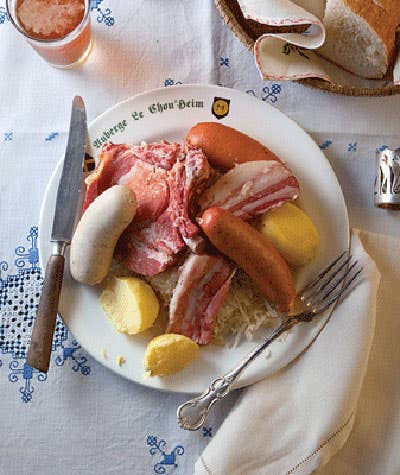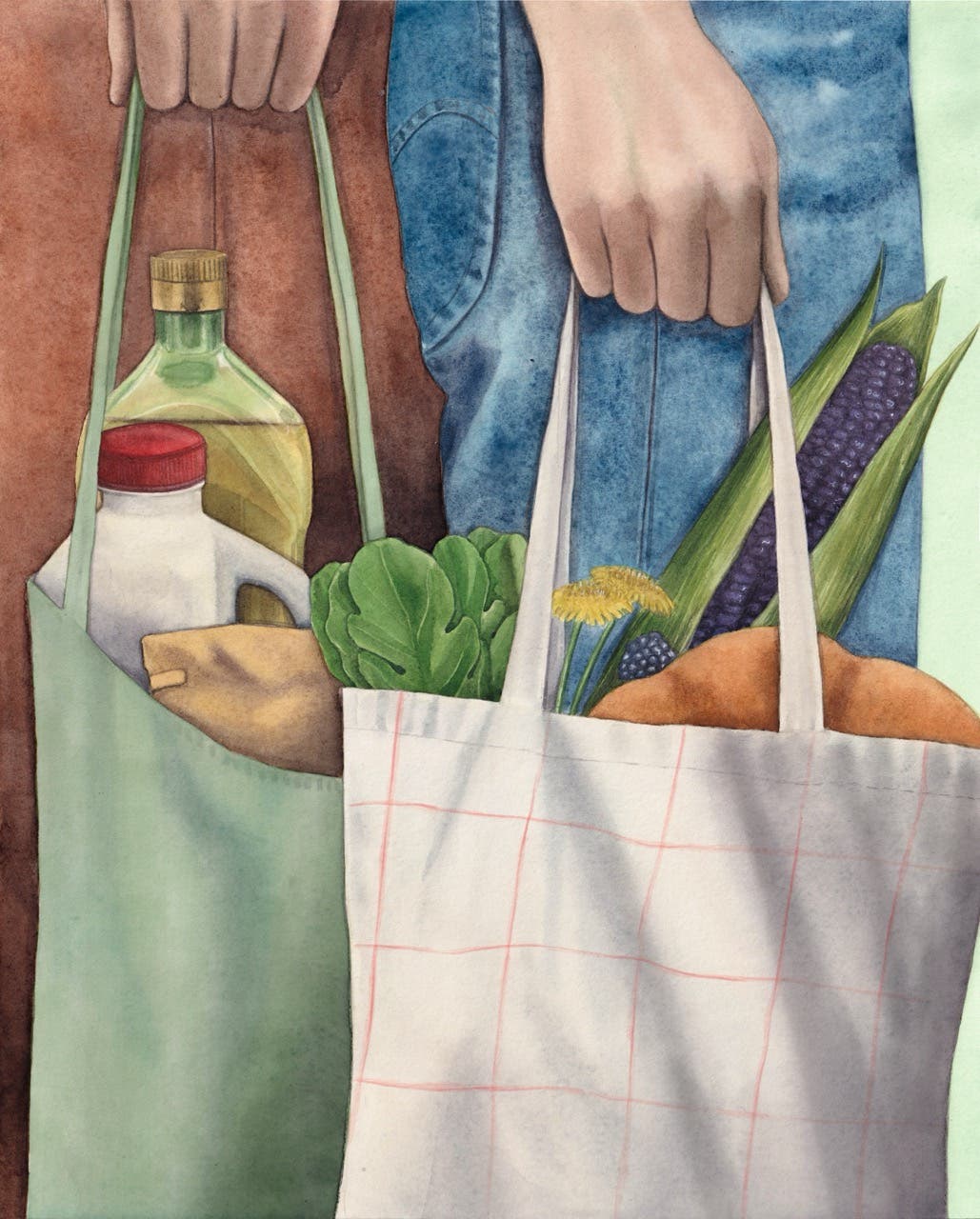
Meat of the Matter
The first time I visited Alsace, the half-timbered houses and the window boxes filled with geraniums looked to me like something out of a Grimm fairy tale. In one of the cozy winstubs, or taverns, unique to this northeastern corner of France, I was introduced to authentic Alsatian choucroute garnie, a heaping platter of wine-braised sauerkraut (choucroute in French), "garnished" with Hansel and Gretel-worthy portions of cured pork and sausages. When the dish came to my table, I giggled at the sheer, cartoonish abundance of it. It wasn't like any French food I'd eaten before, and it wasn't quite like the many German sausage-and-kraut dishes I'd had, either.
Alsace, perched on the threshold between western Europe and central Europe, has bounced back and forth between France and Germany many times over the centuries. Nationality there has always been a less reliable marker of identity than the region's own, idiosyncratic customs, dialect, and cuisine, of which choucroute garnie is the most widely acclaimed symbol. For the French, especially those from the country's northeast, it's a dish that both evokes and satisfies a yearning for home and the comforts of childhood. Ask an Alsatian about choucroute, and he'll invariably start talking about his grandmother.
On a recent trip to Alsace, however, I was determined to get past all that and find out what precisely is involved in the making of a great choucroute garnie. I enlisted the help of the Alsatian chef Jean-Yves Schillinger, who agreed to meet me in the kitchen of Brasserie Cote Cour, a restaurant in the city of Colmar where he serves as a consulting chef. Schillinger, 46, grew up working in his family's acclaimed Restaurant Schillinger; now he has a couple of restaurants of his own in Colmar, including the Michelin-starred JY'S. When I pointed out that he's better known for haute cuisine than for traditional fare like choucroute, he shrugged and said, "But I am Alsatian," as if the recipe for choucroute were encoded in his DNA.
He began by melting a generous dollop of duck fat in a Dutch oven, the first step in making silky sauerkraut. He pointed out that it's also important to rinse the choucroute before putting it into the pot: "In the end, the flavor should be delicate, like wine, not brine." After seasoning the fermented cabbage with salt and pouring in a few cups of dry Alsatian riesling, he added a bouquet garni of bay leaves, cloves, and juniper berries. Now it was time to add the cured pork. There were two types of slab bacon, salty and smoky, and echine, a delicious cut from the back of the pig's neck that I'm sorry to say isn't available in the United States. While the pork and sauerkraut baked in the oven, chef Schillinger simmered the sausages on the stovetop: frankfurter-like knackwursts; garlicky, cumin-flecked Montbeliards; and mild, white boudins blancs. A thick round of boudin noir, or blood sausage, was cooked separately and sliced before serving.
The finished dish came to the table in a traditional ceramic tureen. The thick slices of bacon and echine were layered like shingles over a perfect pyramid of choucroute, with boiled potatoes and the sausages arranged on top. The choucroute itself was finely textured, ginlike from the juniper berries, fruity from the riesling, and infused with some of the smokiness and savor of the pork. It was a truly magnificent creation.
Over the next several days, I tried other choucroutes garnies featuring different meats, notably jambonneau, or ham hock, and Kasseler rippchen, a type of smoked loin chop. Among the more lavish versions were soft quenelles of pork liver. In the city of Strasbourg, at a place called Maison Kammerzell, I learned of a kind garnished with no pork at all. Called choucroute au poisson, or fish choucroute, the dish was popularized by the restaurant's chef, Guy-Pierre Baumann, in the 1970s. Traditionally, choucroute au poisson was a dish made in riverside villages, but today restaurants throughout Alsace serve a version in which filets of flaky, white-fleshed fish such as pike perch are pan-fried or poached and served on a bed of choucroute and topped with a creamy riesling sauce. I've since tried the preparation at home using trout filets, with terrific results.
One of my last stops in Alsace was -Krautergersheim, a farming town that calls itself La Capitale de la Choucroute. Fields upon fields of pale green cabbages extended for miles across the surrounding hillsides, and there was an unmistakable whiff of brine in the air from Krautergersheim's half dozen or so artisanal choucrouteries, small factories where the cabbages are turned into sauerkraut. Near the center of town, I came upon the Auberge le Chou'Heim, a restaurant housed in an old, low-slung farmhouse with a menu posted outside promising five different versions of choucroute. At a table in the wood-paneled dining room, I chatted with the owner, Eric Ivens, over a platter of choucroute garnie made with a zingy-tasting seasonal sauerkraut that had been fermented for only two weeks or so, as opposed to the customary two months or more. It wasn't long, naturally, before he was talking about his grandmother. "In the restaurant we use her recipe," he told me, somewhat wistfully, "the same one she always made for our Sunday lunch."
Keep Reading
Continue to Next Story










